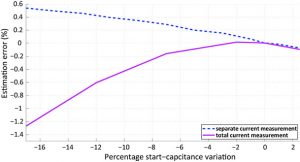Dynamic Model Parameter Estimation and Capacitance Prognostics for Single-Phase Induction Motors
PhD student Phuc Huynh with Advisor H. Zhu
A hundred million single-phase induction motors (SPIMs) are connected to the U.S. distribution grid. Within a few hundred milliseconds after many simultaneously stall, a prolonged voltage drop on the distribution grid, called a fault-induced delayed voltage recovery (FIDVR), could occur. The event could lead to a cascading system failure. Studying this event requires a SPIM dynamic model. The parameters used are conventionally estimated from measurements when SPIMs are in a steady-state operating condition, so they are not accurate in the FIDVR context. We have developed a numerical method to estimate the SPIM parameters that could describe SPIM dynamic behavior in the sub-second period after the stall or start-up. These parameters can be used for FIDVR study. The method, which identifies the crucial parameters and iteratively updates them such that the current error is minimized, is tested on both simulation and real measurement data. Parameter values are accurately estimated on simulation data and current error is significantly reduced on real data.
We also developed a method to estimate the start-capacitance variation. The start-capacitor is usually electrolytic and is the least reliable component in an SPIM. A degraded capacitor accounts for most SPIM failures. Our estimation method is attractive because it is non-intrusive. It requires high-resolution voltage and current measurements (could be separate SPIM winding currents or total current) only when the motor is in good working condition. On simulation data, we achieved less than 1% estimation error when the capacitance value varies up to -15%, as shown in Figure 26. This result is adequate for electrolytic capacitance prognostics. This research is supported by the Siebel Energy Institute.
